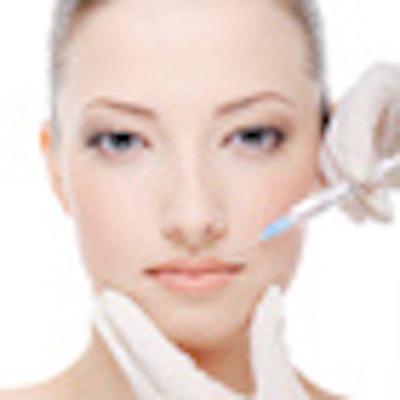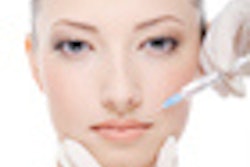
Dentists aren't just wielding needles filled with Novocain these days. Many are now injecting their patients with Botox to improve appearances and alleviate pain -- while at the same time inciting the ire of dermatologists, plastic surgeons, and some of their colleagues.
As state dental boards around the U.S. struggle with how to regulate such injections, some dentists are forging ahead -- and establishing a lucrative new sideline in the process.
"We are creating a new category in dentistry," said Louis Malcmacher, D.D.S., president of the American Academy of Facial Esthetics, who teaches dentists how to use Botox.
“It takes a lot more than teeth to make a great-looking smile.”
— Louis Malcmacher, D.D.S.
Nearly 10% of dentists now use Botox, Dr. Malcmacher said, and demand to learn how to administer it is exploding. Dr. Malcmacher expects to teach about 60 two-day seminars on Botox this year, three times as many as last year.
And no wonder. With the recession damaging many dentists' bottom line, it's hard to resist the prospect of earning tens of thousands of dollars each year with a relatively simple addition to the services they offer.
"It's a real no-brainer," said Catherine Maley, an aesthetic industry marketing expert who began selling Botox marketing kits for dentists six months ago. "There's a 50% markup, and it takes a couple of minutes to do."
She estimates that the average dentist can earn $148,780 a year doing Botox injections, assuming that 20% of their current dental patients will want to get injections two to three times a year. The cost to remove wrinkles between the eyebrows can range from $300 to $400, and getting rid of vertical pucker lines around the mouth can cost $100 to $200 more. In addition, since Botox effects can fade after a few months, many patients return repeatedly for refresher injections.
Dentists are well-positioned to take advantage of the Botox boom because they see patients several times a year, Maley said. With Botox patients needing regular touch-ups, it's convenient for them to have the treatments added to their routine dental cleanings, she added.
Yet Maley advises dentists not to advertise the services in order to reduce the chances that other professional groups will challenge their ability to do such work. Some dentists simply hang up signs in their offices offering the injections -- and watch demand soar, she said.
A turf war?
As Botox demand continues to surge, turf wars over who should be able to administer the medication show no signs of abating. Plastic surgeons and dermatologists are adamant that dentists should not be giving injections in the face.
"I'd be very reluctant to let someone stick a needle in my forehead with no training in that area," said Renato Saltz, M.D., president of the American Society for Aesthetic Plastic Surgery (ASAPS). "Everybody feels qualified to handle this. But it boils down to people's ability to handle complications."
 |
| In addition to the aesthetic effects achieved with Botox, some dentists use it to treat bruxism, temporomandibular disorders, and migraine headaches. |
But many dentists are equally adamant that Botox offers numerous clinical advantages outside of cosmetics (see sidebar). And some argue that they are more qualified to give Botox injections than even dermatologists and plastic surgeons.
"Dentists give more injections than any other healthcare professional," Dr. Malcmacher said.
In addition, almost all of the dental protocols for Botox were co-developed by a dentist. Howard Katz, D.D.S., a San Diego dentist, said he designed most of the protocols while he was co-developing a drug to reverse the effects of numbing agents (OraVerse, Novalar Pharmaceuticals). He initially went to Allergan, which manufactures Botox, looking for studies that might be relevant to his work. At that time, Botox was cleared by the FDA for only a small number of therapeutic purposes, including treating such conditions as crossed eyes and uncontrollable blinking.
Allergan didn't have any studies to help Dr. Katz, so he developed protocols for Botox and patented them. Dr. Katz eventually developed 19 uses for Botox in dentistry, and his Botox protocols are taught to dentists and physicians around the world. He is also the course director for Dentox, which offers monthly courses on Botox use that include protocols for facial aesthetics and dental therapeutics because "almost every dental indication will affect aesthetics," he said.
Qualifications questioned
|
Clinical applications In addition to its cosmetic uses, Botox is used to alleviate a variety of dental problems. Orthodontists may use it to retrain muscles not to work so hard, preventing teeth from shifting back after braces are removed, said Louis Malcmacher, D.D.S., president of the American Academy of Facial Esthetics. Similarly, prosthodontists may inject it to help patients relax their muscles and not spit out new dentures. Dentists have also used Botox to help patients suffering from bruxism, temporomandibular disorders, and migraine headaches. Many people turn to the medication when they can't get relief from mouthguards, said Howard Katz, D.D.S., describing people who come to his office carrying supermarket bags filled with night guards that didn't work. "It doesn't make sense that generic splints are still considered the standard of care for bruxism," he said. Even periodontists can benefit from using Botox, said Dr. Katz, pointing out that one leading cause of losing gum tissue involves muscles pulling too hard on frenums that join lips to gums. "In just about every aspect of dentistry, there's a necessity to control force without being aggressive," he said. |
The majority of Botox injections performed by dentists are in Europe and the U.K., he said. But for dentists in the U.S., he said, "it's taken 10 years to catch on." Part of the problem for U.S. dentists is that they are often challenged about their qualifications, even by some of their peers.
In Maryland, an oral surgeon complained to the state dental board about a dentist doing Botox injections, said Gigi Meinecke, D.M.D., who has a private practice in Potomac, MD. That complaint led to a protracted discussion in the state about when and whether dentists should be allowed to do Botox treatments.
At first, the state dental board said dentists could not do such cosmetic treatments, Dr. Meinecke said, with a board member telling her he believed dentists should "only be drilling teeth." But later, the state attorney general said that state law neither allowed nor barred dentists from doing injections. Now, the state dental board has launched a committee to determine whether to support a change in the law.
Dr. Saltz said the ASAPS has been talking to state regulators in Utah, Oregon, California, New Jersey, and other states to educate them about the potential problems with dentists and other professionals performing Botox injections.
In 2009, 18 state dental boards had specific policies on cosmetic usage of Botox, according to the Academy of General Dentistry. All states allow dentists to inject Botox for therapeutic reasons.
But separating therapeutic from cosmetic applications of Botox amounts to making a distinction without a difference, according to Dr. Katz. When you inject it, "it doesn't stay where you put it," he said. So, for example, if patients get injections around their temples and forehead to reduce teeth clenching, they will get an added cosmetic benefit: their smile lines will disappear, too.
Cosmetic dentists, meanwhile, say they have used Botox to replace complicated procedures aimed at eliminating gummy smiles. Rather than offering patients just "horrible surgical options" that involve crown lengthening and veneers, Dr. Meinecke said she can simply inject Botox into one of the five muscles that raises the upper lip.
In fact, cosmetic dentists say they need to go beyond teeth and gum work to improve their patients' appearances. Patients who walk out of the office with beautiful veneers and thin, wrinkled lips simply won't look good, said Dr. Malcmacher, who injects Botox in almost all of his patients who get veneers.
"We've become very tooth-centric in dentistry," he said. "It takes a lot more than teeth to make a great-looking smile."
Copyright © 2010 DrBicuspid.com



















